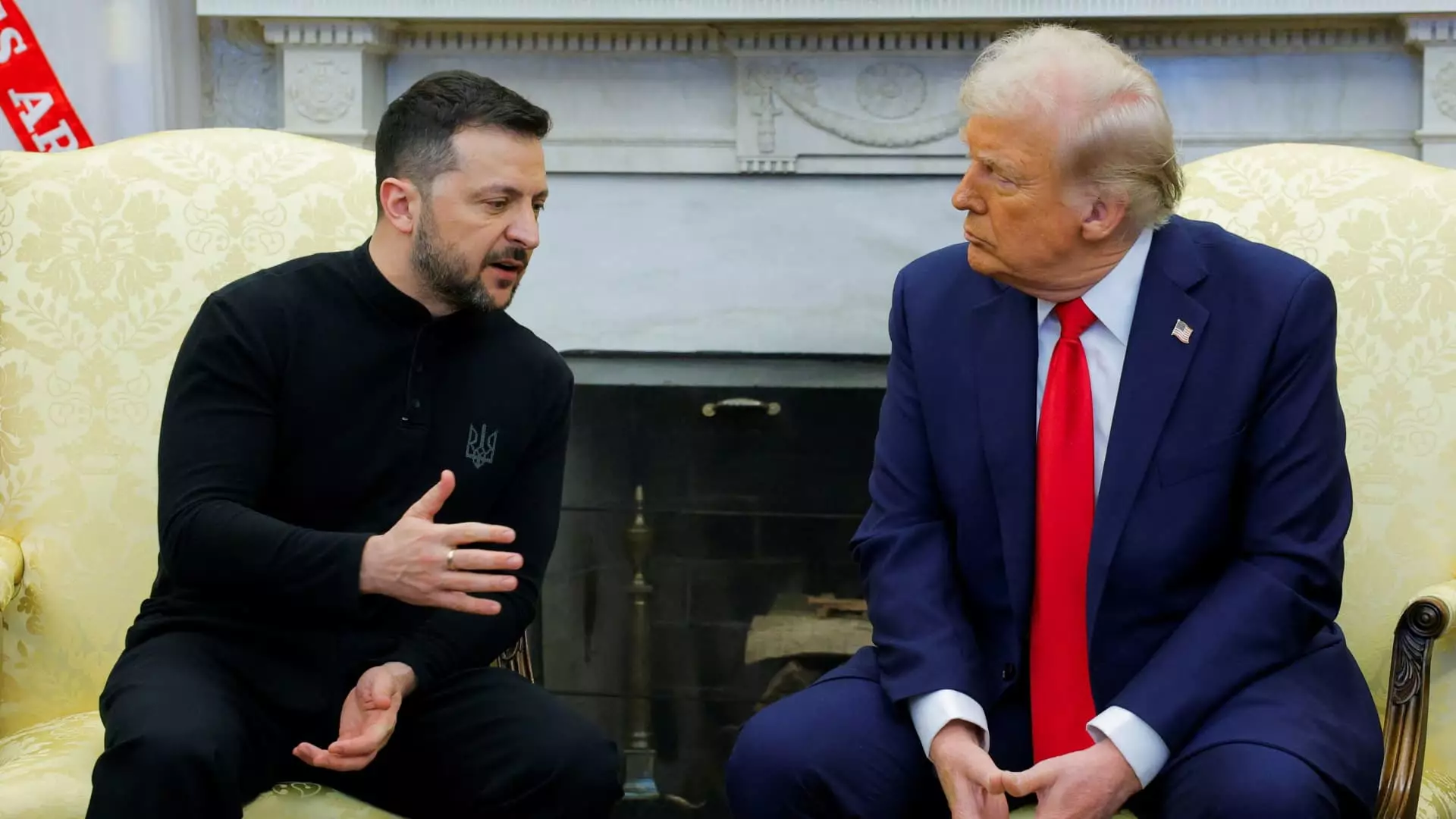The recent meeting between Donald Trump and Volodymyr Zelenskyy in the hallowed halls of St. Peter’s Basilica raises eyebrows and questions about the dynamics of international diplomacy and the intricate web of peace negotiations. Set against the poignant backdrop of Pope Francis’s funeral, their gathering held the promise of transforming a tumultuous relationship into one of collaborative peace-building. Yet, while both leaders presented a façade of productive dialogue, the inherent fragility of their partnership and the looming pressures facing both Ukraine and Russia cast a long shadow over the meeting’s potential outcomes.
Zelenskyy, representing a nation scarred by the ravages of war, articulated a desire for a “complete and unconditional ceasefire.” His hopes for history-making had every right to be realistic, yet they dwelled within the confines of deep uncertainty and fractured diplomacy. While Trump’s retinue heralded this engagement as “very productive,” a deeper analysis reveals a complex interplay of incentives and limitations. Merely claiming a meeting is successful does not equate to actual strides towards lasting peace.
The Papal Influence and Symbolism
Interestingly, the venue—a basilica steeped in history and imbued with the essence of peace—served not just as a physical space but also infused the encounter with symbolic weight. The Pope’s legacy of advocating for negotiation and reconciliation should guide these leaders toward substantive outcomes. Indeed, the message from Cardinal Giovanni Battista Re during the funeral service succinctly underscores the futility of conflict, labeling war a “painful and tragic defeat for everyone.” Yet history teaches us that such symbolic moments do not automatically translate into tactical solutions on the ground. They are but brief flashes amid an ongoing struggle for definitive answers.
While the optics of two leaders exchanging earnest dialogue are compelling, they overshadow the profound rifts that persist in negotiation dynamics. Trump’s recent position regarding Crimea—a contentious issue that Ukraine and its allies deem an unyielding red line—highlights divergent views on the fundamental aspects of peace talks. Any superficial unity may crumble under the pressure of such deep-seated divisions, revealing a partnership knit together by necessity rather than genuine accord.
Power Dynamics: The Leaders Need Each Other
Notably, both leaders find themselves entangled in a necessity born of competing agendas. Trump’s readiness to apply pressure on Russia for a lenient peace agreement is counterbalanced by Zelenskyy’s urgent need for that pressure to alleviate the suffering of his people. Yet this precarious balance could dissolve at any moment, as evidenced by their historically rocky relationship. Each war of words and political maneuvering underscores the constant tightrope they walk, rife with uncertainty and mistrust.
The dialogue in Rome sought to bridge, albeit tenuously, the turbulent waters of their respective narratives. While Zelenskyy’s rejection of suits symbolizes an adherence to authenticity and support for his war-torn citizens, Trump’s seasoned experience in the political limelight contrasts sharply with this approach. The sartorial choices of these leaders encapsulate the essence of their styles—Zelenskyy grounded in his reality, and Trump enrobing himself in the spectacle of political theater. Yet, can a partnership founded on such differing values yield the desired dividends of peace?
Contradictions in Peace Efforts
The meeting’s aftermath hints at contradictions persistently destabilizing any progress made. The potential for a follow-up meeting between the two leaders was overshadowed by the departure of Trump’s aircraft, emphasizing the volatility of their interaction. This precariousness is not new; tensions have long characterized U.S. and Ukrainian relations, particularly under the specter of Russia’s aggression. As they stood together amid gathered world leaders, how can any observer miss the undercurrents of distrust overshadowing their shared goal?
Zelenskyy’s comments regarding Trump being trapped in a “disinformation bubble” reveal the challenges of not just diplomatic negotiations but also mutual understanding. Herein lies the crux of the problem—they may meet, they may speak, but fundamental perspectives remain at odds. The understanding that neither can achieve their objectives without the other necessitates engagement; yet, such engagement does not equate to alignment.
As these two figures navigate their turbulent seas, they move forward with the undeniable knowledge that lasting peace remains an elusive aspiration. Amidst the grandiosity of their meeting, the world watches to see whether their dialogue translates into genuine action, or if it further entangles them in a cycle of political rhetoric that yields nothing but disillusionment. The stakes are high, and the time for genuine leadership is now, lest history repeat itself in cycles of failed attempts toward peace.


Leave a Reply